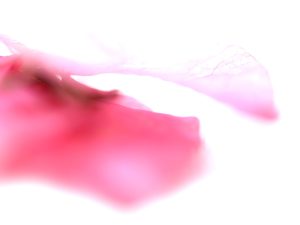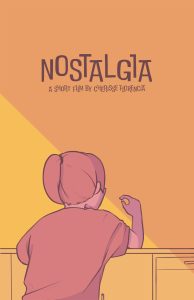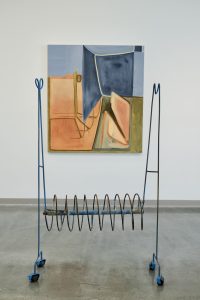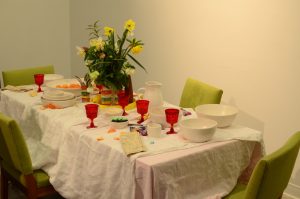Collective Experience
Dilveen Abi (دلڤين)
See it On Campus: Level 1
Visitor InfoLevel 1, D1359
ECU Award Recipient
Opus Art Supplies Graduation Award BFA – Winner
| Graduation Artwork | Artist Statement | Other Artworks | Biography
Graduation Artwork
‘Collective Experience’
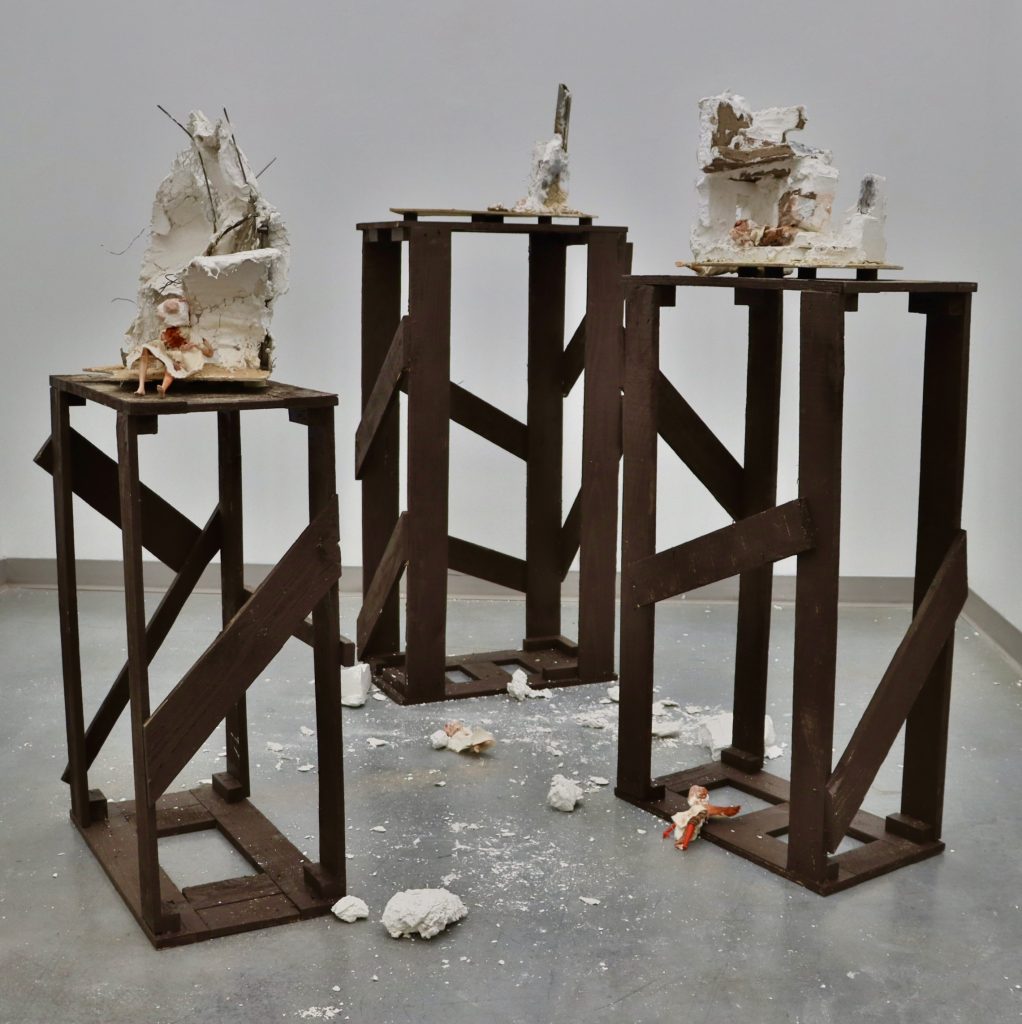
‘Collective Experience’ Spring 2024. Plaster powder & strips, metal scraps, polystyrene foam, soil from Kurdistan. Figurines made from aluminum & chicken wire, oil clay, plaster strips, paint & ink, wrapped in muslin fabric, size approximately 6″ tall. Plinths made from scrapped pallets. On Exhibit at the Emily Carr University Of Art & Design, The Show, May 9th – 23rd, 2024.
In the Heart of The Middle East there echoes a grim enduring feat, a land ensnared in relentless repetition, imprinting the scars of bombardment’s cruel imposition.
What are your thoughts on the Middle East? Does it evoke a narrative of a region entrenched in conflict. “It is unsafe to travel there”, a caution uttered by foreign authorities that initiate air strikes, decimating homes, and leaving the land barren.
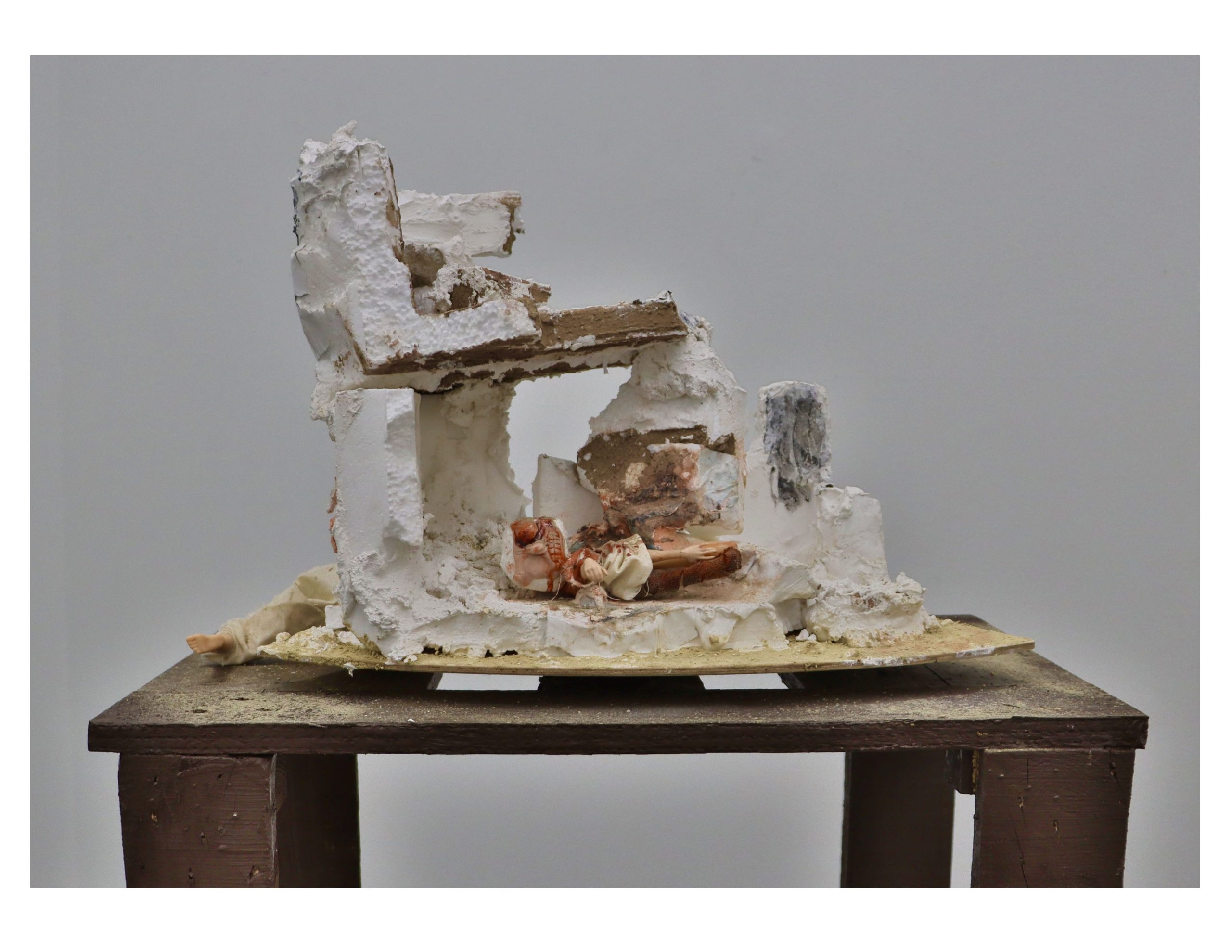
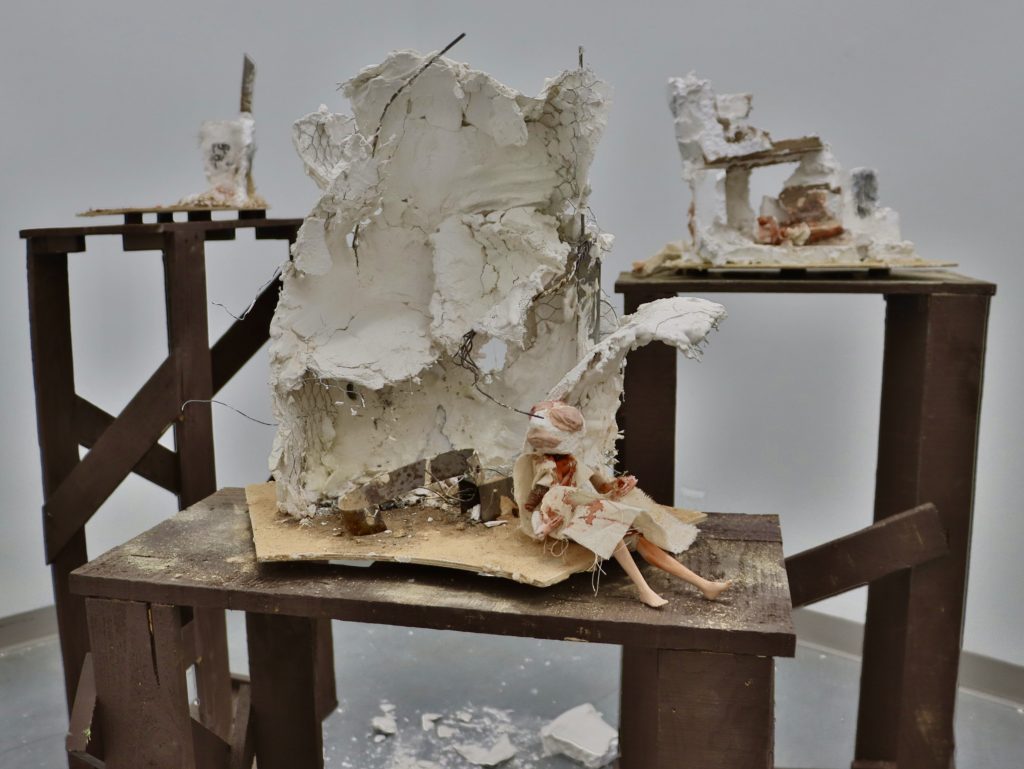
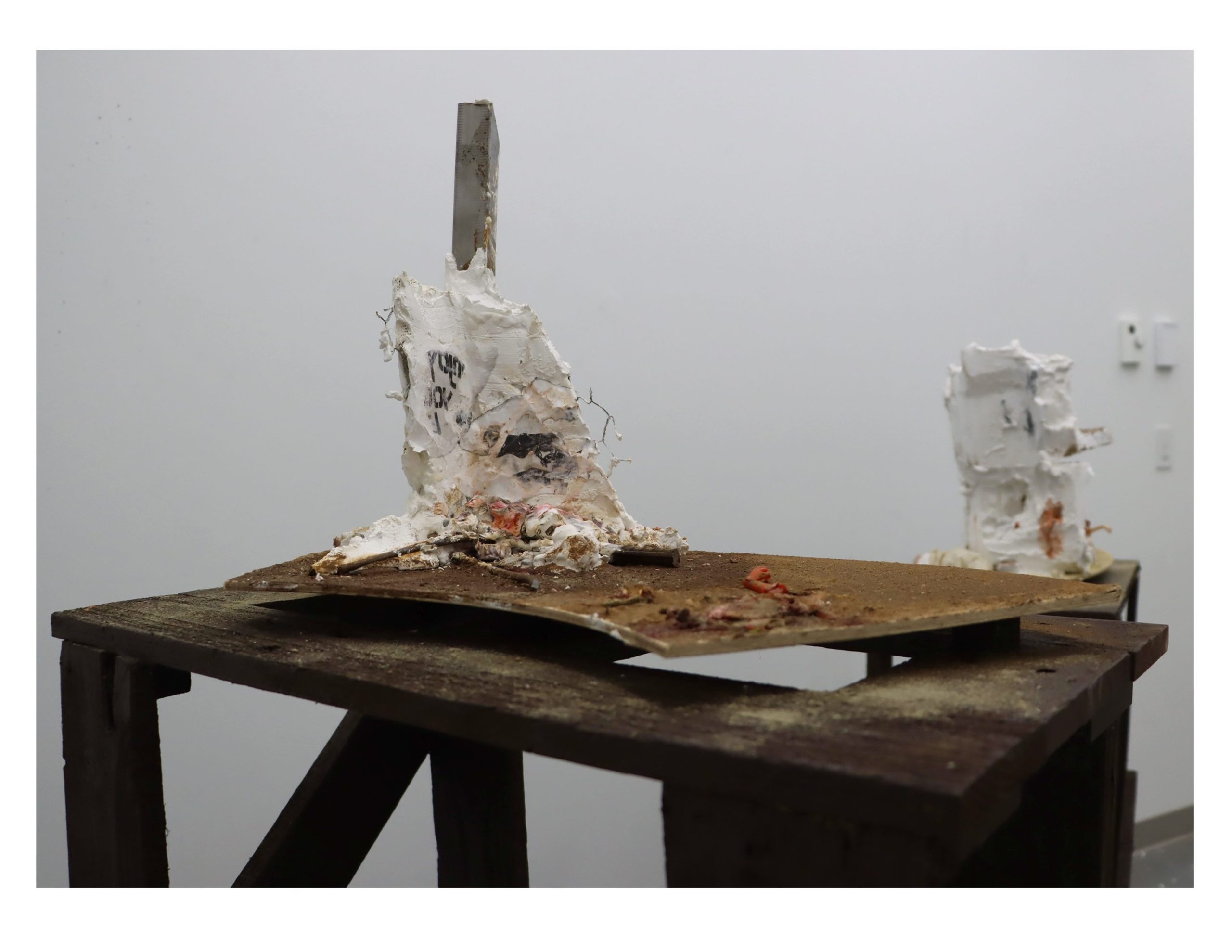
I sculpted the ‘moment’ of bombardment and the aftermath of the destruction. I opted to not capture true reality, since art should not be a copy but rather a representation. The houses are made from plaster, the white being a symbolic colour in the Middle East for burying the deceased. Each plinth represents a collection of conflicts and the intensity of casualties in the Middle East:
- The Iraq War
- Al-Anfal Campaign, The Kurdish Genocide
- Syrian Civil War
- Yemen Civil War
- The Palestinian Genocide
- Proxy Wars
The extraction of wealth and oil, coupled with discrimination and prejudice, shows a troubling cycle. I fear that the West may perceive us as nothing more than animals, terrorists, or a land constantly embroiled in war and needing correction. My homeland is in a cycle of repetition. The past two centuries have witnessed a recurring narrative in the Middle East: repeated bombardments, economic exploitation, and the dehumanization of the ethnic people. The stories I sculpt are not new; they are a reflection of the enduring struggles in the Middle East. Loss has become normalized, and the label of ‘terrorist’ has become a statement of the Middle East
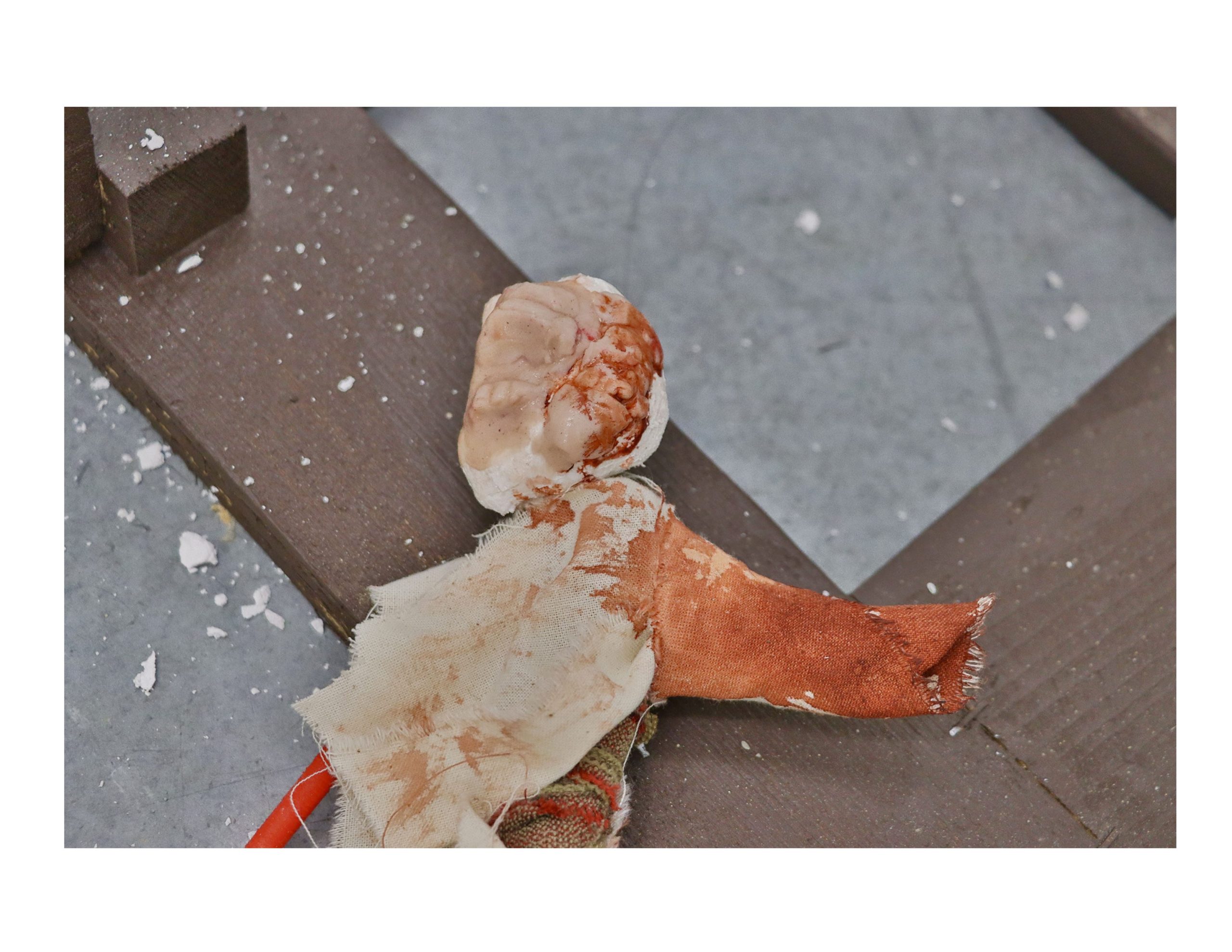
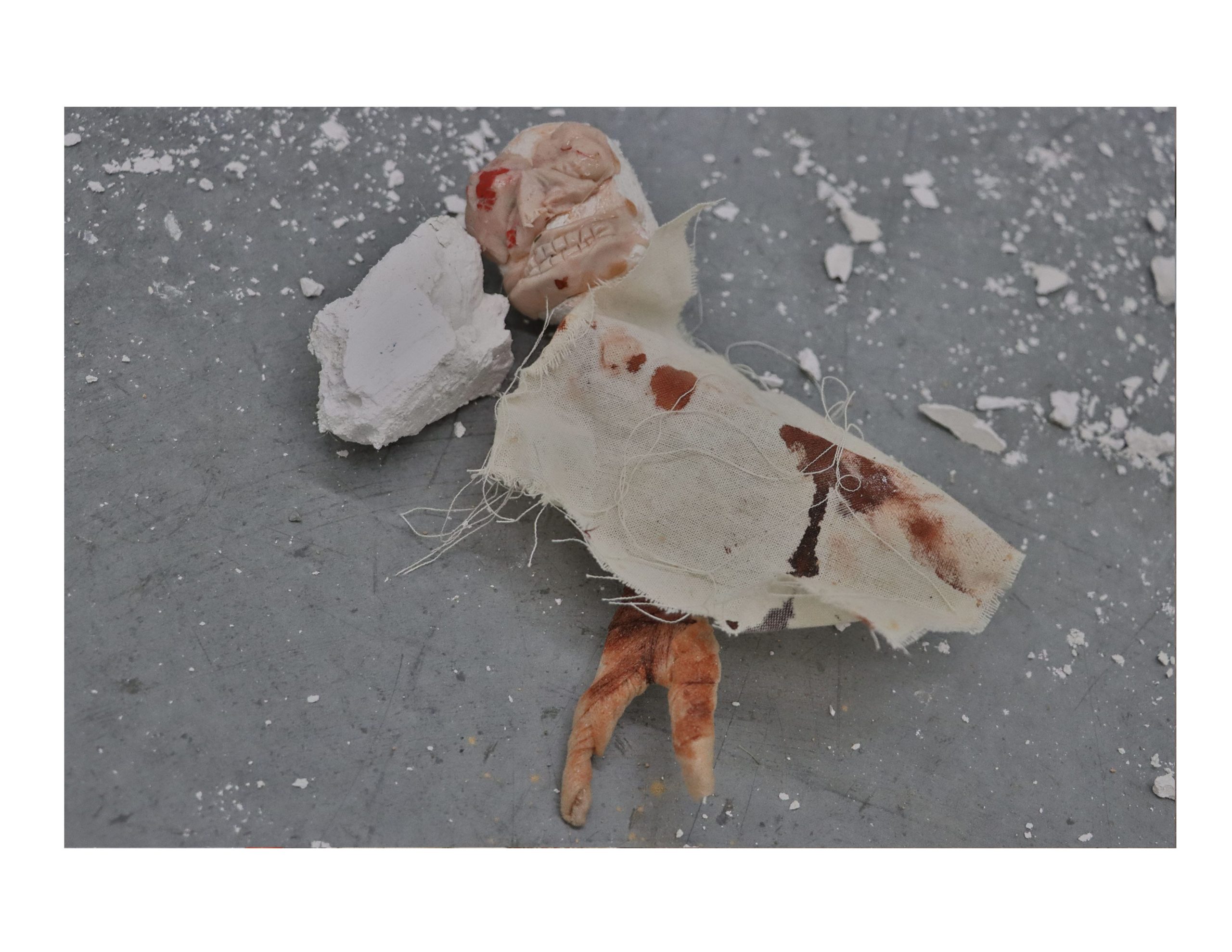
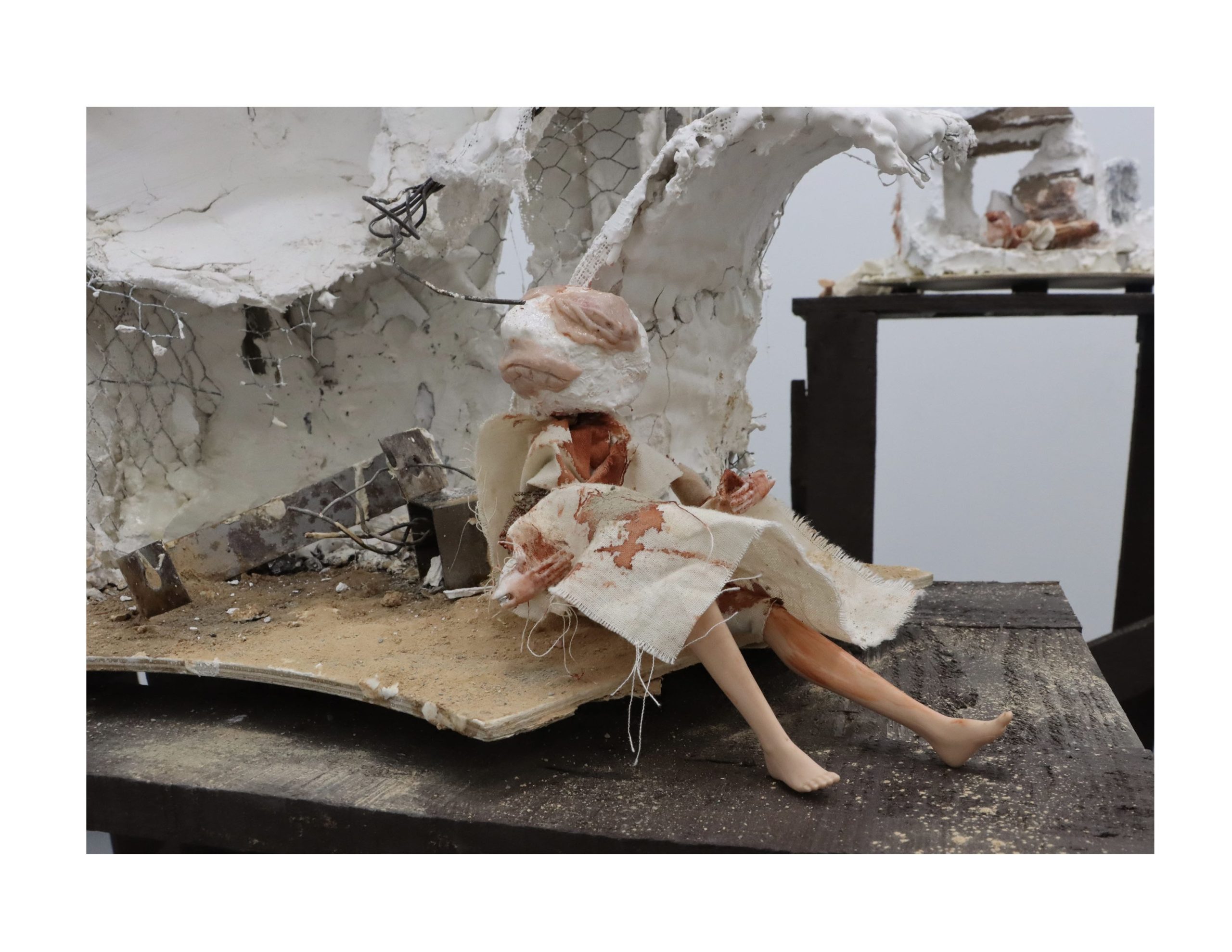

- Unknown person crushed by tank,
- The chemical attack of Halabja, A man holding an unknown infant.
- A mother holding a bloody cloth belonging to her son.
- A body unwrapped, revealing the remnants.
How can I proudly proclaim my identity as a Muslim, hailing from Kurdistan, Iraq, and the Middle East without the side glance from the outsiders? What can I do to challenge preconceived notions of the region? The Middle East is a place where care and compassion abound, yet all that is often seen is horror.
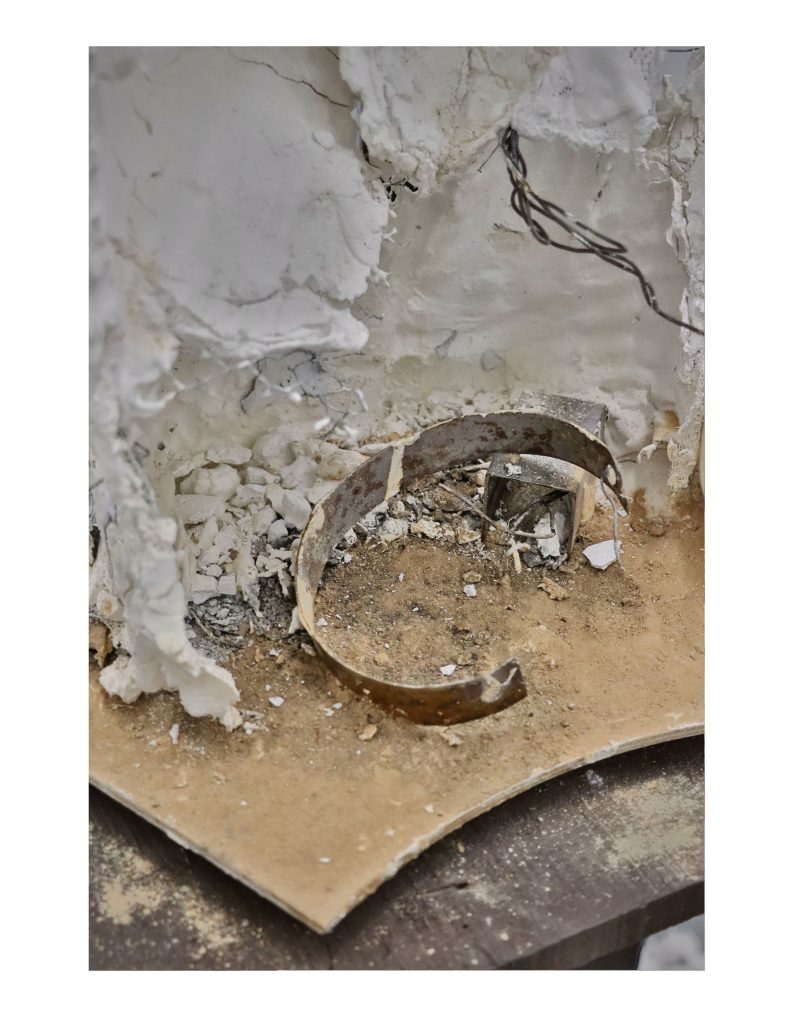

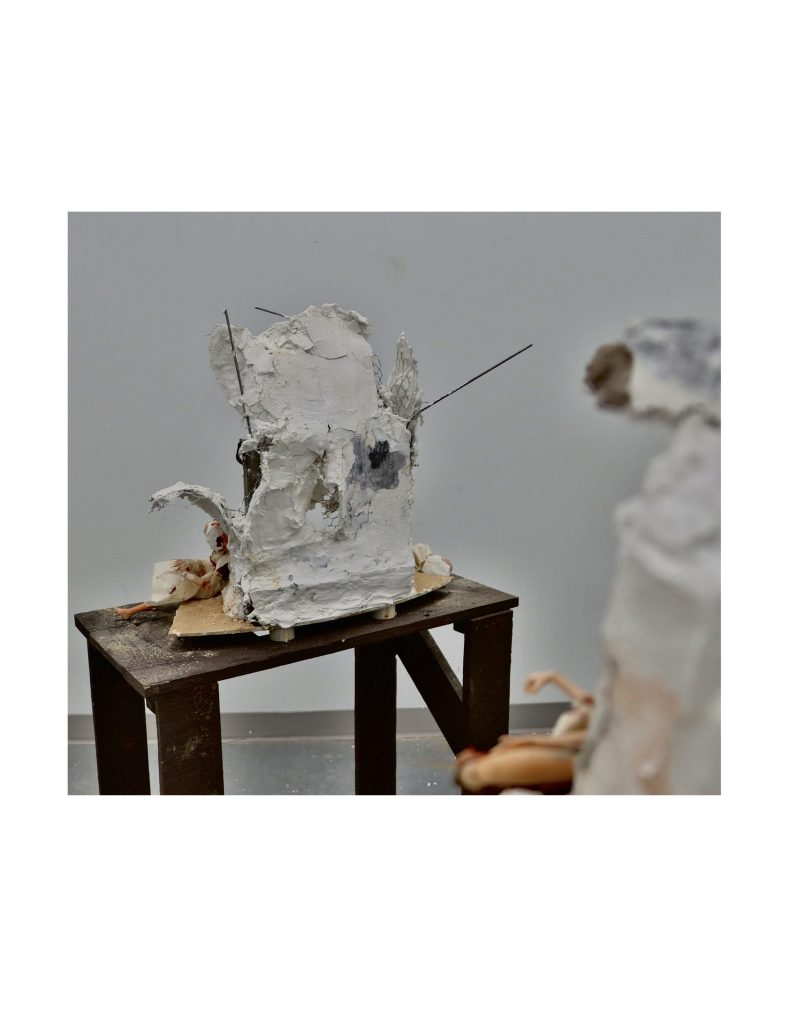
Turning on Western new channels, one is shown reports of casualties in the Middle East, devoid of humanizing context. Channels like Al Jazeera reveal the raw truth of a mother mourning her son after a bomb killed him. The normalization of atrocities in the Middle East has been ingrained in Western society, fostering a sense of ignorance. This normalization extends not only to outsiders but also to those within the region who have grown accustomed to the cycle of fear.
However, it doesn’t have to be this way. I implore my audience to look beyond the lens of destruction, death, and dehumanization present in my sculptor piece and reality that often defines the portrayal of the Middle East. There is a rich history of resilience, hope, and humanity. Let us strive to challenge stereotypes, foster empathy, and envision a future where the Middle East is seen in its full humanity.
Artist Statement
Sculpture is a fluid discipline — it easily leans itself be an Interdisciplinary practice. I use fluidity to capture the experience of the environment. To put it succinctly, ‘I am a documentarian of my environment’.
Each choice of sculptural material becomes a tool to capture the essence of my piece. Drawing inspiration from a ‘moment of experience’ that played in my personal narrative — migrating to Canada due to the growing conflict in the Middle East and a poignant return to place of origin, Kurdistan. The evolution of my sculpture is a response to the interplay between changing environments and personal experience. My practice originally focused on environmental sustainability, guided by the traditional mediums of the Middle East, and the narratives embedded within my chosen materials. As a flexible artist, my work shifted and delved into the beauty functionality of the human experience in the environment, and the visceral horror of conflict one can cause. This journey from traditional and sustainable has enveloped to more aggressive materials; plastics, barbed wire, bullets, splintered wood, and found objects that capture the enduring conflict in the region of the Middle East. This shift represents not only a preservation of cultural identity as a Kurdish Women and a form of resistance, but also a testament to my identity as a sculptor.
Other Artworks
‘Destruction and Colonization’
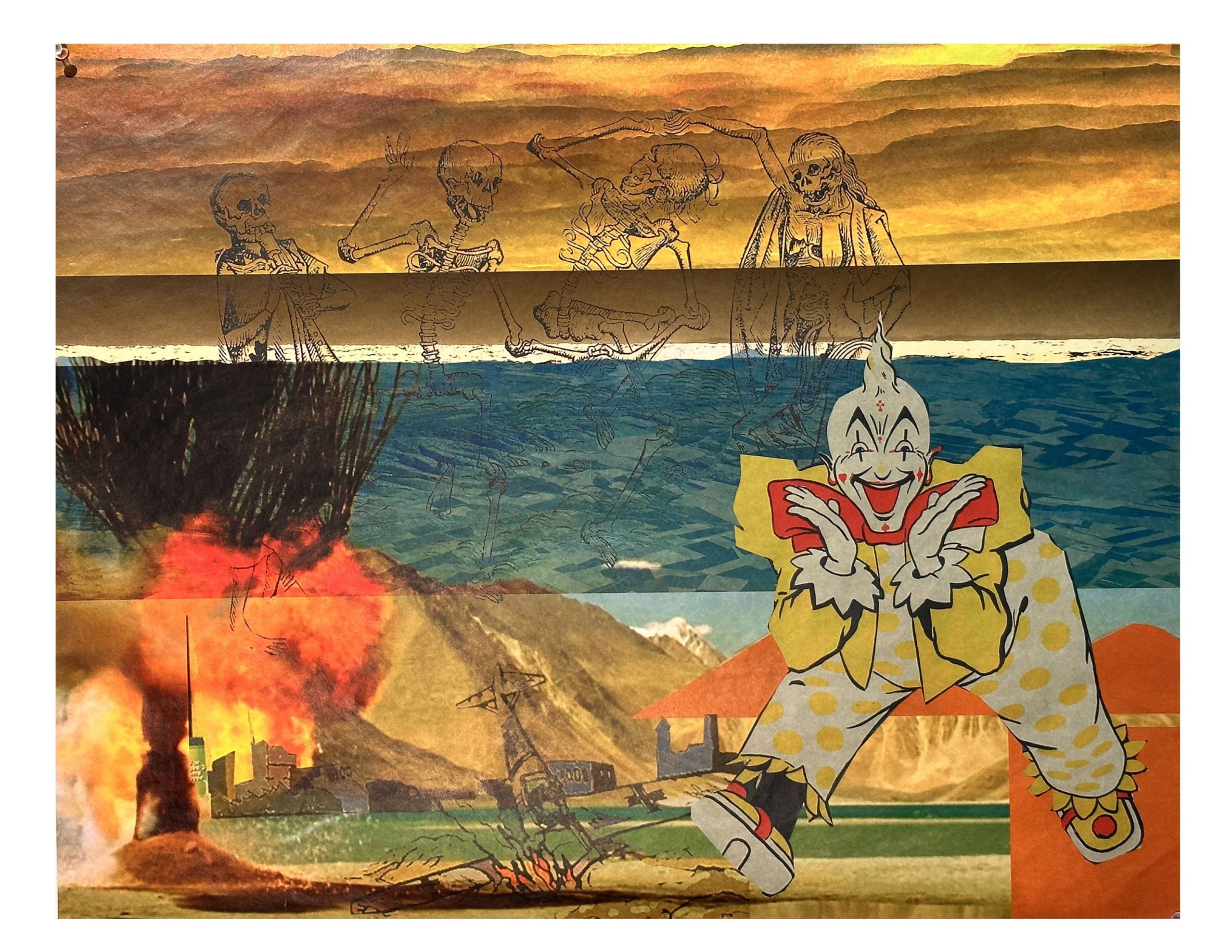
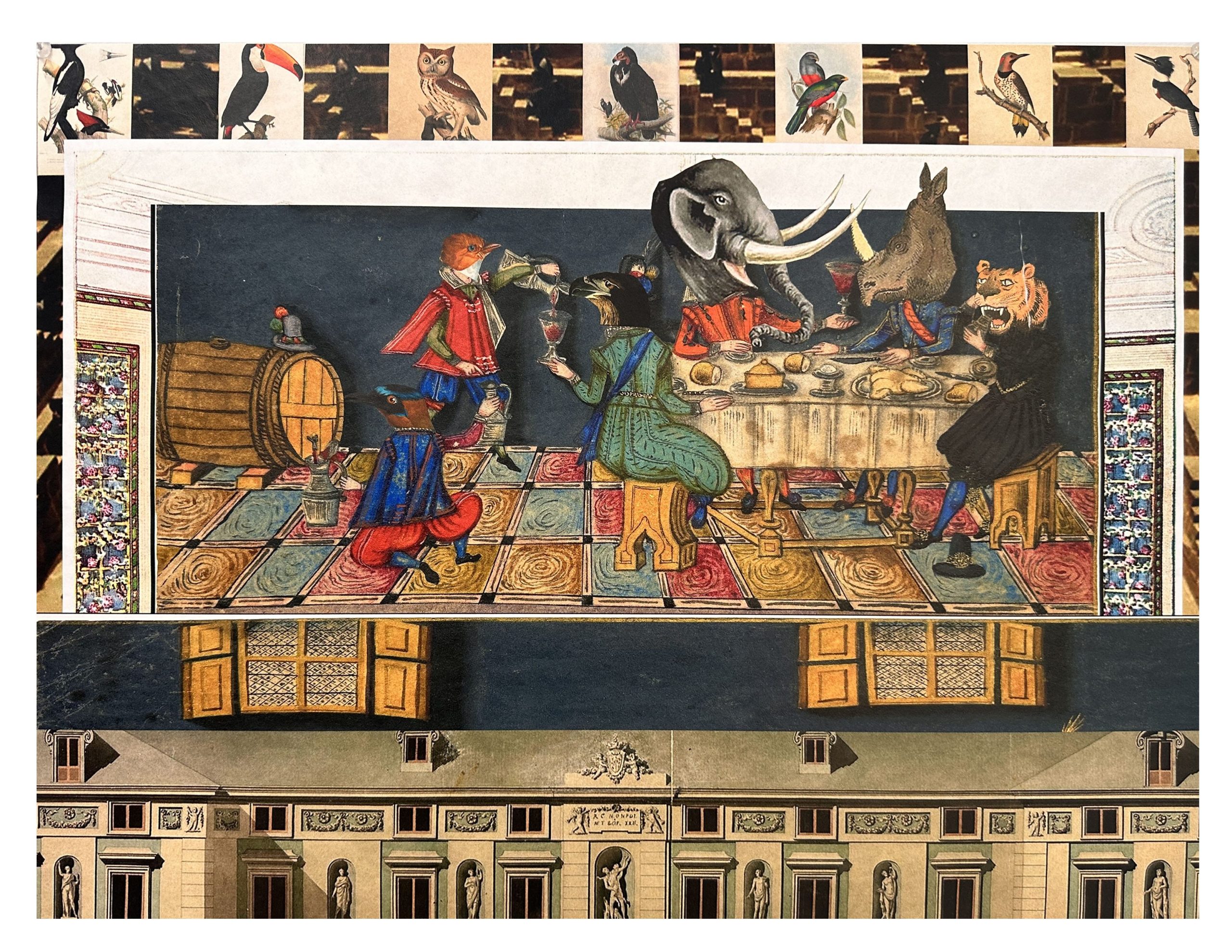
‘Destruction and Colonization’, Winter 2023. Digital collage of copyright free images, and photographs taken sky view of Kurdish land by the artist, Dilveen Abi, Summer 2022. Size 22” x 17”.
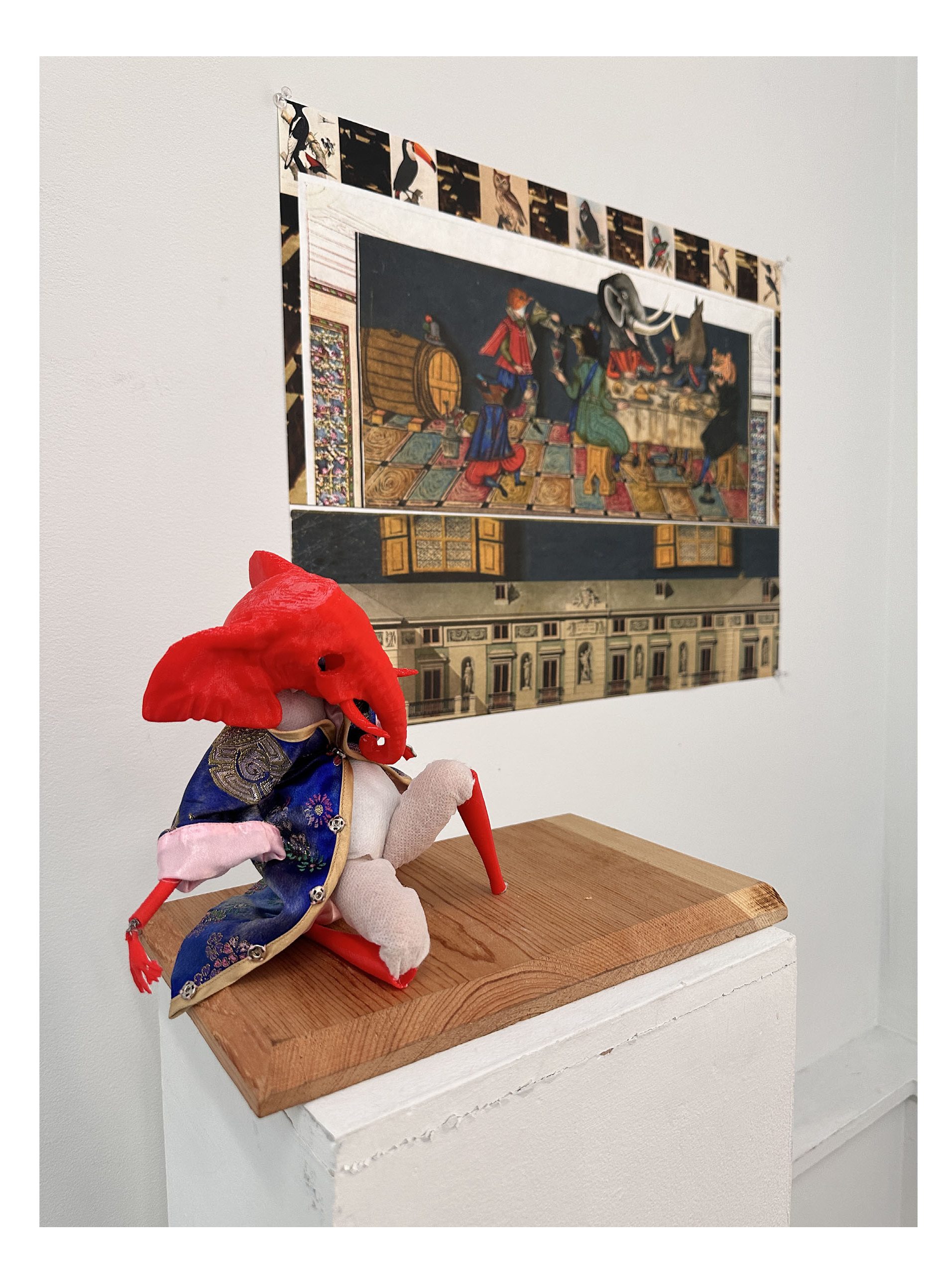
‘Destruction and Colonization’, Winter 2023. Figurines made from aluminum wire, cotten, synthetic silk, head and arms 3D sculptured. Size approximately 6” tall.
‘Destruction and Colonization’ serves as a prelude to my sculptural work ‘Collective Experience’. In summer of 2023, I looked at the ongoing conditions in the Middle East, my place of origin. I saw a continuing pattern of conflict spanning decades. I created a digital collage that visualized the conflict. What emerged were themes of destruction, colonization, religious conflict, lit by the benefit of foreign entities, and the wealthy inhabitants benefitting from the exploitation of resources and land acquisition.
I proceeded to craft figurines embodying the characters from the collage, sculpting animal heads and crafting symbolic garments denoting accumulated wealth from benefits of colonialism. I wondered whether this narrative of conflict, colonialism, and religious unrest truly encapsulated the essence of the Middle East Story.
‘huMAN metamorphosis’
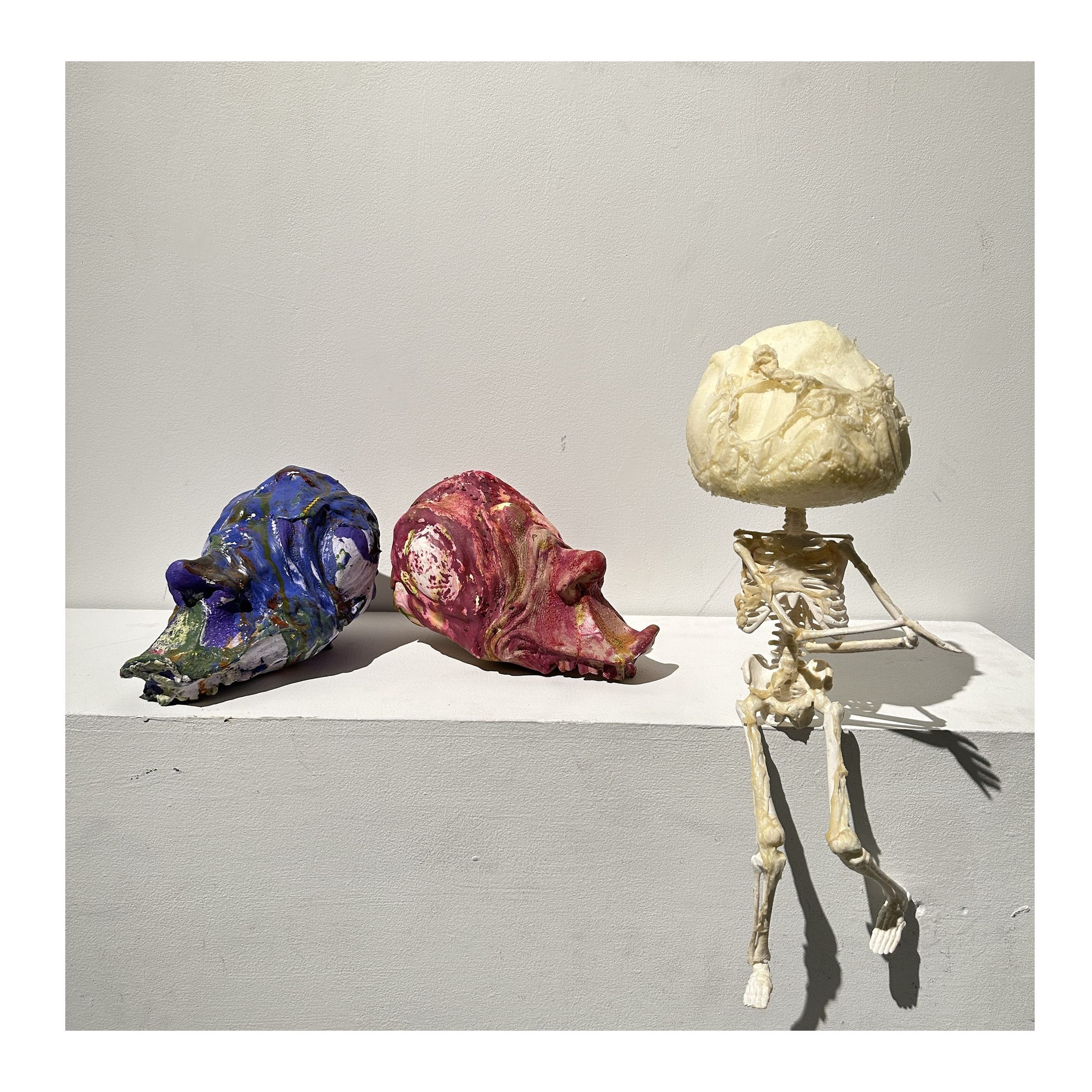
‘huMAN metamorphosis’ is a moulded sculptural piece that delves into the anxieties stemming from social expectations and the desire to break free from the norm system. It portrays the sense of alienation caused by social expectations, where individuals struggle to express their true identities. By donning various colourful masks that are socially acceptable, they attempt to conform, yet underneath it all, they feel a sense of vulnerability and nakedness.
‘huMAN metamorphosis’, Spring 2023. Headpiece moulded from expanding foam, plastic, layered with resin and acrylic paint. Found skeleton body layered with latex.
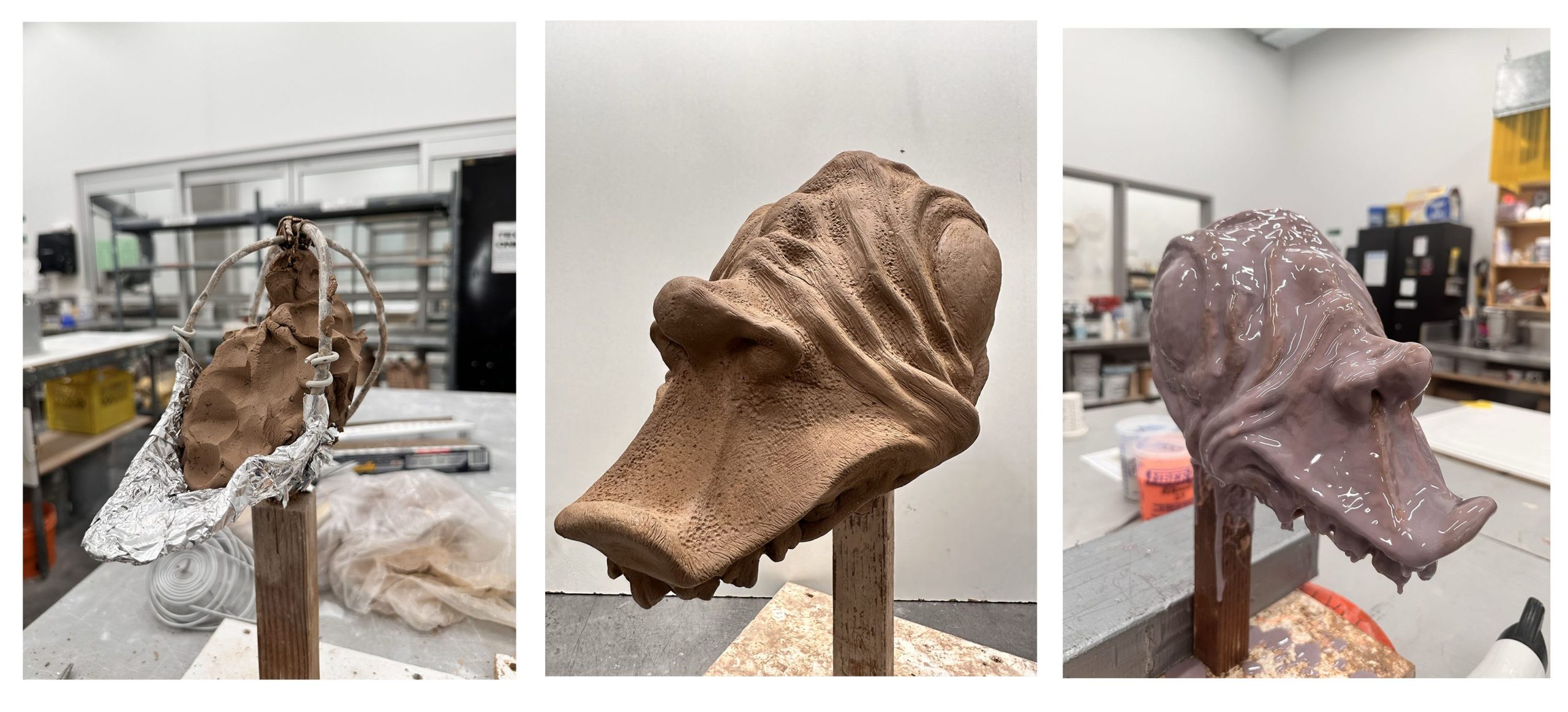
The moulding process: laying down the base, sculpturing the headpiece with clay, afterwards creating a mould using silicone and casting with plastic and expanding foam.
‘My House In The East’

‘My Home In The East’, Fall 2022. Wood and cardboard, painted in white acrylic. Installation raised with fish net wire. Clips projected onto the installation, sourced from The Wizard of Oz 1939 film. Exhibited at Emily Carr University of Art & Design, ‘Object Corner’, November 2022.
I was inspired to create the sculptural installation ‘My Home In The East’ after reflecting on the film The Wizard of Oz, a movie I cherished while growing up. I became captivated by the central theme of the film of yearning to return home. Similar to Dorothy, I developed a deeper appreciation for the concept of reconnecting with one’s heritage and family after an extended period away in a foreign land. While Dorothy’s tale involved Oz and Kansas, mine was intertwined with Vancouver and a deep yearning for Kurdistan, Duhok. The video clips sourced from the film depict characters pushing Dorothy towards choices that veer her away from returning home. Mirroring the white painted house cascading in the sky, I, too, felt unable to reach my homeland. I ultimately made decisions that would lead me closer to home. This installation represents a media experiment aimed at capturing colourful feelings I have when reminiscing about my home.
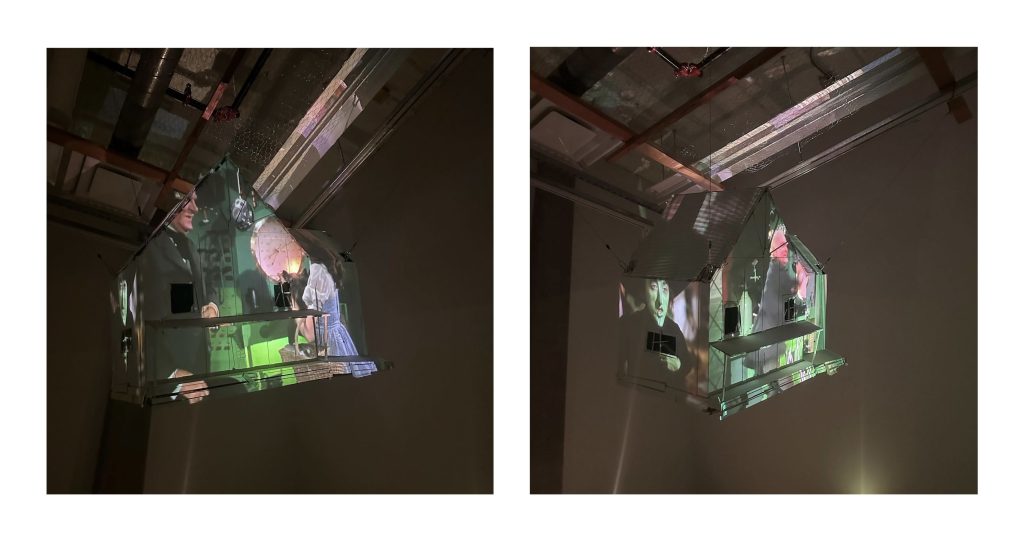
‘Building As Culture’

‘Building As Culture’ Bring it Up and Bring it Down, 2021-2022. Soil, hay, straw, and water mixture, mud bricks made from moulding. Exhibited at Emily Carr University of Art & Design, Elbow & Knee Gallery 2022. Bricks Exhibited at Emily Carr University of Art & Design, ‘Roots of Place’: Sustainable Material Research Expo, June 2022.
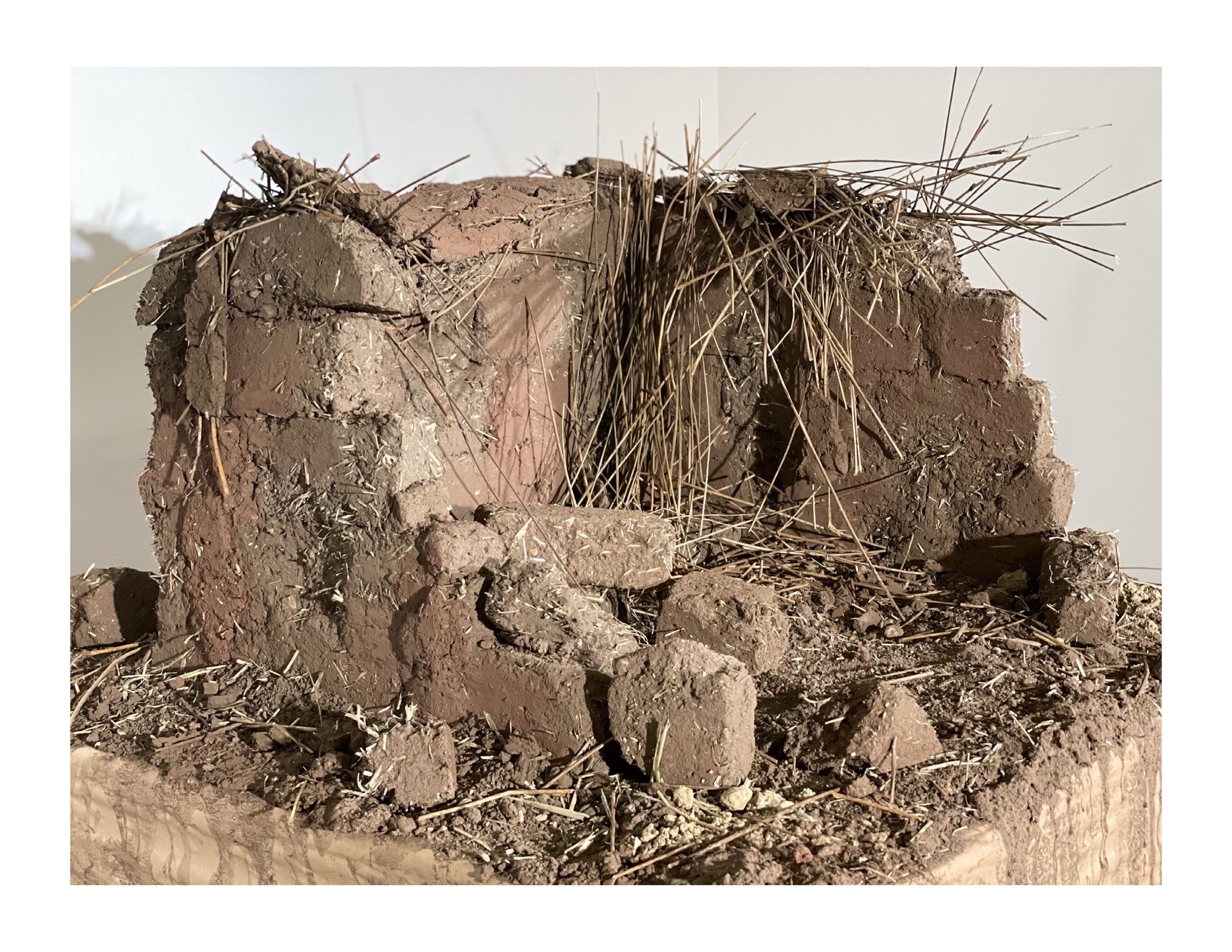
‘Building as Culture’ was a monument to preserving Kurdish heritage. My homeland is rich in sustainable materials that we, The Kurdish people, harness for constructing homes and roads; these materials became ingrained in our garments, forming the heart of our cultural and artistic identity. I fondly recall the mud and straw houses —a cherished memory from childhood—acting as a shield from the summer heat and against the winter cold. The mud houses were strengthened by communal efforts annually, we came together as a community and upheld our culture. With each visit to my land, I witness the growing disconnect between cultural heritage and modernity. The Kurdish people are progressively moving towards stone bricks, departing from our sustainable roots, cultural and artistic identity. In a moment of realization, I dismantled the monument, brick by brick, heartily acknowledging that we, as the Kurdish people, have departed from those bygone days.
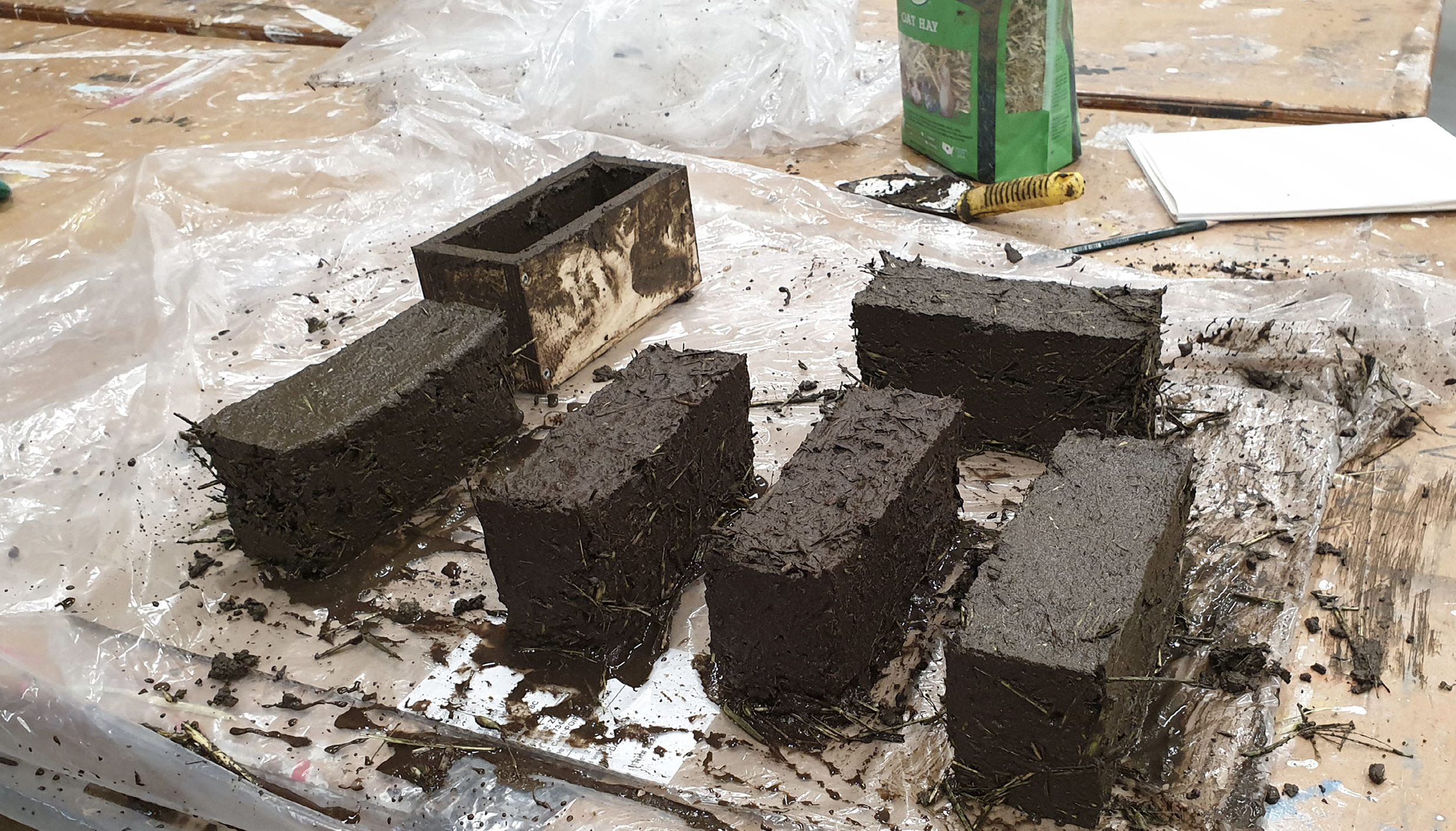
I asked my father to teach me how to make mud bricks, a skill prevalent in his childhood. During my visit to my homeland, my father, along with other members of our extended family, guided me to making mud bricks before I began the construction of ‘Building As Culture’ in Canada. I documented the process in a video as a reference to keep.
‘Wearable’
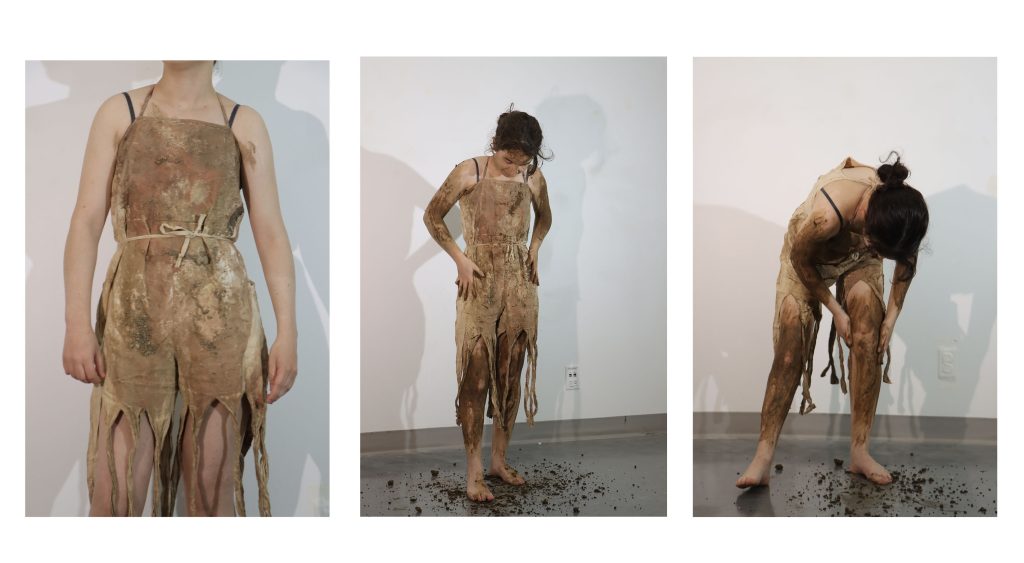
‘Wearable’, 2021. Cloth, sewn, various soil gathered from Port Moody, BC & Duhok Kurdistan. Performance piece at the Elbow & Knee Gallery, Emily Carr University of Art & Design, 2021.
A performance piece based around the connection between body and land. The mixture of two regions, a connection between two lands. In the military, the women of Kurdistan who camouflage their bodies with the soil from the land, shielding themselves from enemies. This performance was inspired by the courageous women.
‘Sustainable Exploration’
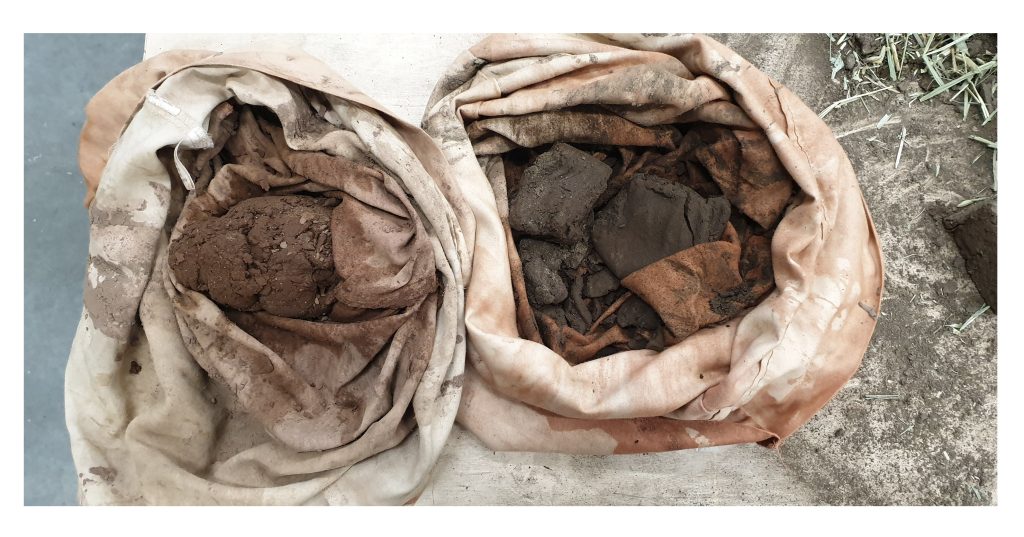
‘Sustainable Exploration’ A documentation, 2020-21. Soils gathered from Port Moody Inlet, Mission, and Chilliwack valley, pairing with Kurdish regional soil. Colours forged from minerals and soil. Research exhibited at Emily Carr University of Art & Design, ‘Roots of Place’: Sustainable Material Research Expo, June 2022.

